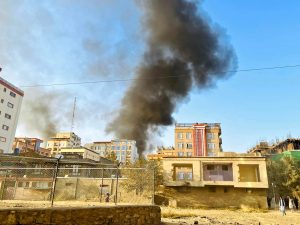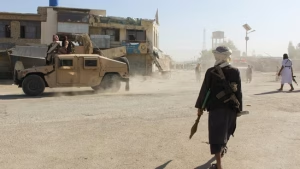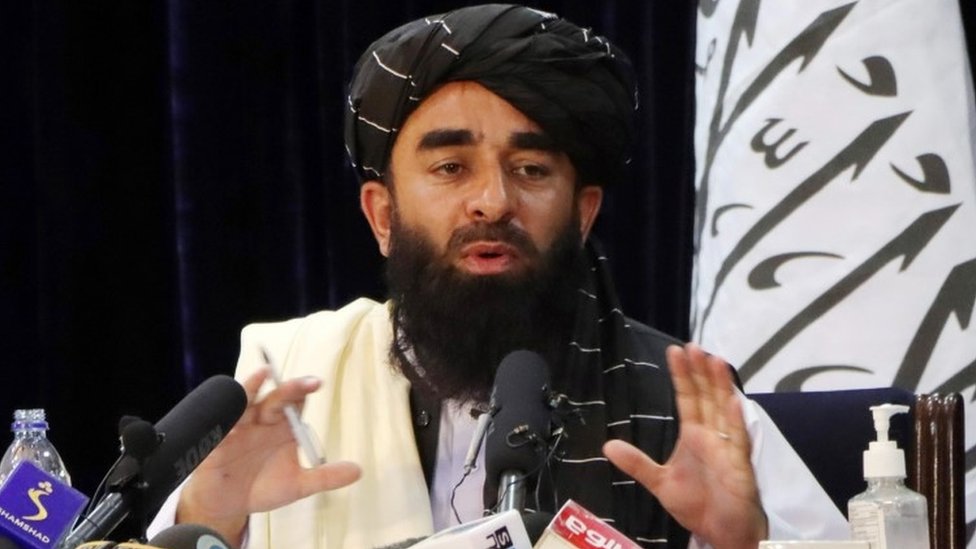Fresh violence erupted along the Pakistan Afghanistan border on Tuesday night, resulting in dozens of casualties among both military personnel and civilians. The escalating conflict prompted Pakistan to launch airstrikes on Afghanistan’s capital Kabul and Kandahar province, marking a significant intensification of hostilities between the two neighboring nations. Following the deadly exchanges, both countries agreed to a 48-hour ceasefire, though each side claims the other requested the temporary halt.
Deadly Violence Erupts on Pakistan Afghanistan Border

The latest round of fighting along the Pakistan Afghanistan border began Tuesday night when Pakistan’s military reported cross-border firing by Afghanistan forces and local militants. According to security officials from both sides, the clashes resulted in significant casualties, with dozens of troops and civilians killed in the exchanges.
Pakistan’s military reported repelling two major assaults by Afghanistan’s Taliban on border posts in the southwest and northwest regions. The confrontations highlighted the increasingly volatile security situation along the Pakistan Afghanistan border, where tensions have been escalating in recent weeks.
Pakistan Launches Airstrikes in Kabul and Kandahar
Hours after the initial border fighting reports emerged, Pakistan launched airstrikes targeting locations in Afghanistan’s capital Kabul and the southern Kandahar province. The military operation represented a significant escalation in the Pakistan Afghanistan border conflict, extending beyond immediate frontier areas to strike deep inside Afghan territory.
Pakistan’s military stated that approximately 20 Taliban fighters were killed in attacks launched near Spin Boldak on the Afghan side of the frontier in southern Kandahar province early Wednesday morning. “Unfortunately the attack was orchestrated through divided villages in the area, with no regard for the civil population,” the military said in a statement regarding the Pakistan Afghanistan border operations.
The Pakistan military additionally claimed that about 30 more Taliban fighters were likely killed in overnight clashes along its northwest border region, demonstrating the widespread nature of the violence along the Pakistan Afghanistan border.
Also Read: Pakistan UN Child Rights: Nishikant Dubey’s Explosive Accusations of Afghan Children Killings
Civilian Casualties Mount in Border Violence

Afghan officials reported that 15 civilians were killed and dozens were injured in the fresh violence along the Pakistan Afghanistan border. Ali Mohammad Haqmal, spokesman for the local information department in the Spin Boldak region, confirmed the civilian death toll from mortar fire in the clashes.
Abdul Jan Barak, an official at the Spin Boldak district hospital, reported that more than 80 women and children were injured in the fighting, underscoring the devastating impact on civilian populations caught in the crossfire along the Pakistan Afghanistan border.
Security officials reported that fighting between troops and militants in Pakistan’s border district of Orakzai killed six Pakistani paramilitary soldiers and injured an equal number, further illustrating the human cost of the escalating Pakistan Afghanistan border conflict.
Taliban Government Response and Accusations


Taliban government spokesperson Zabihullah Mujahid accused Pakistani forces of “once again” carrying out attacks “with light and heavy weapons” in the district. The Taliban spokesman claimed that Afghanistan forces killed many “invading” soldiers of Pakistan while seizing weapons and tanks and capturing their posts along the Pakistan Afghanistan border.
This rhetoric reflects the increasingly hostile stance between the two governments regarding control and security along the Pakistan Afghanistan border, with each side blaming the other for initiating hostilities and civilian casualties.
Context: Weekend Border Clashes
The latest violence along the Pakistan Afghanistan border follows significant clashes that occurred last weekend. Afghanistan launched attacks on Pakistani soldiers along their shared border late Saturday, describing them as “retaliation for air strikes carried out by the Pakistani army on Kabul” on October 7.
While Afghanistan claimed its strikes killed 58 Pakistani soldiers, Pakistan contested this figure, stating the toll was 23. Pakistan claimed it killed more than 200 Taliban and affiliated troops in counterfire during those weekend exchanges. The border crossings between Afghanistan and Pakistan were shut on Sunday, October 12, amid rising tensions.
Hours after Pakistan Prime Minister Shehbaz Sharif vowed a strong response, the Taliban indicated it has “other ways to handle the situation if Pakistan does not want to engage in dialogue.” The previous round of fighting was halted after Qatar and Saudi Arabia intervened diplomatically.
48-Hour Ceasefire Agreement
Following the intense fighting, both Pakistan and Afghanistan agreed to implement a 48-hour ceasefire along the Pakistan Afghanistan border. Interestingly, each side claimed the other requested the temporary cessation of hostilities, reflecting the complex diplomatic dynamics at play.
The ceasefire provides a crucial opportunity for both nations to de-escalate tensions and potentially engage in dialogue to address the underlying security concerns along the Pakistan Afghanistan border.
Strategic Implications and Regional Concerns
The recurring violence along the Pakistan Afghanistan border raises serious concerns about regional stability and the humanitarian situation for border communities. The involvement of various militant groups, including the Pakistani Taliban, complicates efforts to establish lasting peace.
The pattern of attack and retaliation, coupled with civilian casualties and infrastructure damage, suggests that without sustained diplomatic intervention, the Pakistan Afghanistan border may continue to experience periodic escalations that threaten both nations’ security and development objectives.

